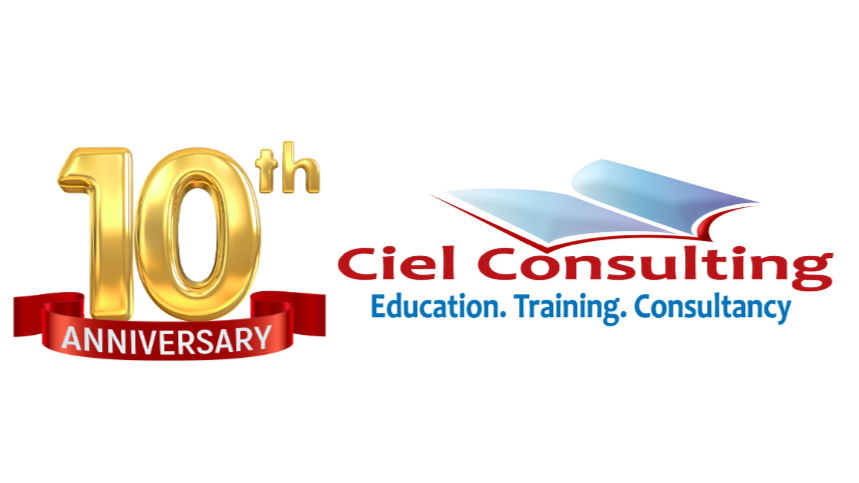PMP Brain Dumps
In the previous article I explained tips, cautions, best practices, techniques and resources that help you prepare well as you get closer to the PMP exam. One of the things I talked about is brain-dump, what does it contain and when it is created.
Read the 10-min PMP preparation tip, here.
Braindump is crucial for CBT (computer based test) where you get few minutes at the beginning of the exam to write down important points on paper. This allows you to legally copy. :-) The idea is to avoid confusion, and allow quick access to information – reducing time taken to answer questions and answer more questions correctly.
If you are taking PBT (paper based test), this may or may not be allowed, as some persons have reported they did, others say they were not allowed to. But in any case the exercise of pulling together important points on to a paper – serves the purpose of revision. So my advice is not to skip this important exercise.
Just to reiterate, here are few points you need to keep in mind about brain dump.
a) Brain dump may consist of the following –
formulas
list of names
mnemonics, doodles, or mindmap(s)
complete names of gurus (you may get questions with wrong first name in the options, for instance John Juran)
anything that you find difficult to remember
b) Write formulas even if you know them well. It just saves the time to recall them during the exam and might avoid an occasional confusion
c) Write important things from PMBOK syllabus first, followed by points related to ‘outside areas’ discovered during practice exams. This is because if you are not able to complete brain-dump in the stipulated time window then you end up leaving out ‘low risk’ points. This is better than leaving out things from syllabus, like formulas. I got to write only about 65% of my brain-dump during the 13 minutes I got.
d) You don’t need to have a structure to your brain-dump. The goal is to write down as much of it as possible during the short time window of 10-12minsyou get just before the exam begins
e) Start creating your brain-dump in the last week leading up to your exam. This is when you are pretty much done with the studies and grey areas are apparent.
f) ‘Download’ brain-dump on to the scratch paper given to you at Prometric center, during the 15 minutes window you get to understand exam software interface.
Tip: Make sure you have enough space left on the scratch paper to do actual calculations after writing brain-dump, because if you ask for another paper Prometric staff will take away the first one!
Remember that your typical brain-dump is very terse, lot of it would make sense only to you. Just to illustrate the point, here is my brain dump. You may have to connect dots at few places to make sense out of it, and this is how it looks. Make sure you create your own brain dump, which would be most beneficial to you.
Here we go.
Note: This is a crudely formatted one. The reason is because that is how brain dump is. Jotted in a matter of minutes on a piece of paper. Since even I cannot understand my handwriting well, I am typing my brain-dump instead of showing a picture of it written on a piece of paper.
Earned Value Management
———————–
EV = BAC * % complete
EV = PV * % complete (any point during project execution)
EV=BCWP (budgeted cost of work performed)
PV=BCWS (budgeted cost of work scheduled)
AC=ACWP (actual cost of work performed)
SV = EV-PV > 0 is good
SPI = EV/PV > 1 is ahead of schedule
CV = EV-AC > 0 is good
CPI = EV/AC > 1 is under budget
PV = SV/(SPI-1)
AC = CV/(CPI-1)
——
EAC = AC+bottom-up ETC : when initial estimates are flawed
EAC = AC+(BAC-EV) : when ETC is predicted to be done at budgeted rate (ATYPICAL)
EAC = BAC/CPI : when ETC is expected at current CPI (typical)
EAC = AC+(BAC-EV)/(SPI*CPI) : at current SPI, CPI
EAC=BAC-CV ?
EAC = AC/%Complete
ETC = EAC – AC :assuming work goes as per plan
ETC = BAC – EV
VAC = BAC – EAC
%VAC = VAC/BAC * 100
TCPI = (BAC-EV)/(BAC-AC) : accepting BAC value
TCPI = work remaining/funds remaining
TCPI = (BAC-EV)/(EAC-AC) : when BAC is not sufficient and EAC is calculated
TCPI > 1 is bad
————-
Expected Monitory value: EMV=Impact*Probability
————-
Communication channels = N*(N-1)/2
7% of communication message is contained in words
38% in vocal pitch
55% in body language
Albert Mehrabian’s book “Silent Message”
————-
TEAM stages – Tuckman (Jensen) Ladder
forming
storming
norming
performing
adjourning
Future value & Present value
—————————-
FV = PV (1+r)^N : r=rate of interest, N=number of time periods
PV = FV/(1+r)^N
NPV : higher the better
NPV > 0 investment will add value, accept the project
Internal rate of return, IRR : Bigger the better
Benefit Cost Ration, BCR : Bigger the better
Payback period: Lesser the better : This is nothing but Breakeven period
Payback period=Net investment/Avg annual cash flow
————-
Probability distribution
————————
PERT: Normal: (O+M*4+P)/6
Triangular: (O+M+P)/3
SD of activity = (P-O)/6
Variance of activity = [SD]squared
————-
Float/Slack/total slack = LS-ES = LF-EF : =0 for activities on critical path
————-
Cost Of Quality, COQ = EFTW+COPQ = POC+PONC
Essential first time work
Cost of poor quality
Price of Conformance
Price of non-conformance
————-
Depreciation/Straight-line depreciation = Asset cost/Useful life
Double declining balance = 2x((Asset cost – Accumulated depreciation)/Useful life)
————-
Rough Order of Magnitude (ROM) -25% to +75%
Budget Estimate -10% to +25%
DefinitiveEstimates -5% to +10%
————-
Remember, RETURN = Net Income Before Tax (NIBT) *or* Net Income After Tax (NIAT); & ON means ‘/’
Return on Sales, ROS = NI*T/Total Sales
Return on Assets, ROA = NI*T/Total Assets
Retrun on Investment, ROI = NI*T/Total Investment
Working Capital = Current Assets – Current Liabilities
Discounted cashflow = Cashflow * Discount factor
————-
Contract related formulas
————————-
Savings = Target cost – Actual cost
Bonus = Savings*Percentage
Contract cost = Bonus+Fees
Total cost = Actual cost + Contract cost
————-
Point of total assumption
PTA = [(Ceiling Price – Target Price)/Buyer’s Share Ratio] + Target Cost
Cost to buy = Initial cost + [#months * (monthly maintenance costs)] lifecycle cost = total cost + maintenance and support cost for lifetime of product
————-
Normal Distribution
——————-
1 sigma = 68.26%
2 sigma = 95.46%
3 sigma = 99.73%
6 sigma = 99.999%
1 SD = 1 sigma
————-
What Five Strategic Considerations may result in authorization of a project? (MOCkTaiLS – MOCTLS)
Market demand
Organizational need
Customer request
Technological advances
Legal requirements
Social need
————-
EVA = Net Operating Profit After Tax – Cost of Capital (Revenue – Op. Exp – Taxes) – (Investment Capital X % Cost of Capital)
EVA: Economic Value Add Benefit Measurement – Bigger is better
Source Selection = (Weightage X Price) + (Weightage X Quality)
————-
Types of powers of PM:
Legitimate
Reward
Expert
Referent
Coersive/Punishment
————-
Motivational theories
———————
Hertzbergs highgyene-motivation
Maslow’s hierarchy of needs
McGregor Theory X, Y; / Z(assurance of permanent job position)
McClelland’s Need Theory
Victor Vroom Expectance theory
———————
Peter Principle=Halo effect
———————
range of variance on a budgetary estimate can be from -10% to +25%.
—————————————
Paul Hersey/Ken blanchard’s Situational continuum/leadership
change leadership style based on maturity of subbordinates/team.
S1: Telling; S2: Selling; S3: Participating; S4: Delegating;
system testing vs integration testing
Seven Quality Mgmt and Control tools(NP, MAP IT)
————————————————
Network diagram
PDPC
Matrix diagram
Affinity diagram
Prioritization Metrics
Interrelationship digraphs
Tree diagram
7 Basic Quality Tools (See See See, Husband and Father Playing Soccer)
——————————————————————
Check sheet
Control chart
Cause-and-effect diagram
Histogram
Flow chart
Pareto chart
Scatter diagram
type II error – beta risk
ACTIVITY ON ARROW/arrow diagramming method
McKinsey’s 7S’s – Robert H. Waterman, Jr. and Tom Peters
Hard Elements
Strategy
Structure
Systems
Soft Elements
Shared Values
Skills
Style
Staff
7 reasons of conflicts on projects
———————————-
schedule
project priorities
human resources
technical opinions and performance trade-offs
administrative procedures
persnality conflict
cost and budget
Conflict management style
————————-
withdraw/avoid
compromise
smoothen/accomodate
collaborating
confront/problem solving
force
Collaborating: win/win;
Compromising: win some/lose some; >> lose/lose
Accommodating: lose/win;
Competing: win/lose;
Avoiding: no winners/no losers
Test of Normality
Paired Comparison Analysis
opm3
managemet by objective
capability maturity model
tqm
Merrill and Reid in their employee motivation theory?
personality traits: driver, expressive, amiable, and analytical.
Joseph Juran:applied the Pareto principle to quality issues
“Juran’s Trilogy”: quality planning, quality control, and quality improvement.
W. Edwards Deming
PDCA – along with Shewart
Philips Crosby – DIRFT (4 principles)
The definition of quality is conformance to requirements (requirements meaning both the product and the customer’s requirements)
The system of quality is prevention
The performance standard is zero defects (relative to requirements)
The measurement of quality is the price of nonconformance
Vilfredo Federico Damaso Pareto
80-20 principle
Kaoru Ishikawa
root-cause diagram: fishbone
KJ Diagram ()
William Ouchi (jap)
Theory Z, permament job offer
Genichi Taguchi
Design of experiments
F.C. Moore
“Delegation means assigning work to the others and giving them authority to do so”
Overlapping relationship
Sequential relationship
Multi-phase relationship
Iterative relationship
Predictive/plan-driven
Iterative and Incremental
Adaptive/Agile
NPV is defined as: The difference between the present value of cash inflows and the present value of cash outflows.
critical chain methd by Eliyahu M. Goldratt
The critical path method (CPM) is a project modeling technique developed in the late 1950s by Morgan R. Walker (of DuPont) and James E. Kelley
Parkinson’s law is the adage which states that “work expands so as to fill the time available for its completion”.
Student’s syndrom – work is done at the last moment before deadline
Group decision making criteria (BINAM)
——————————
Brainstorming
Idea/mind mapping
Nominal technique
Affinity diagrams
Multi-criteria decision analysis
Failure mode and effect analysis – FMEA
QFD – quality function deployment (type of Facilitated workshops)
Discrete, Apportioned, Level of Effort – EMV effort types
marginal analysis
lifecycle costing
deming’s 14 points?
ARMA>
zero sum processing
issue log
shannon-weaver model of communication
code of ethics: Respect, Responsibility, Honesty, Fairness >>>> Aspirational and Mandatory
direct, indirect, fixed, variable costs
———————
That’s about it. This may look a lengthy one, but when you write one for yourself it certainly doesn’t feel long. Moreover, you write even briefly on paper. The only point to keep in mind is to practice the brain-dump couple of times a day during the last week leading up to your PMP exam. The more you practice, the easier it is to write on paper in shortest time, and more confident you will feel during the exam!
Here’s a bonus tip – write the points in descending order of importance to you (ideally all formulas should be written down first), so if you end up not being able to put down everything on paper, you’ll miss only least important points.
So, that’s the secret to feel good and do good during the exam!
If you need any help with your PMP preparation write to me at obalim@cielgr.com
Good luck!

